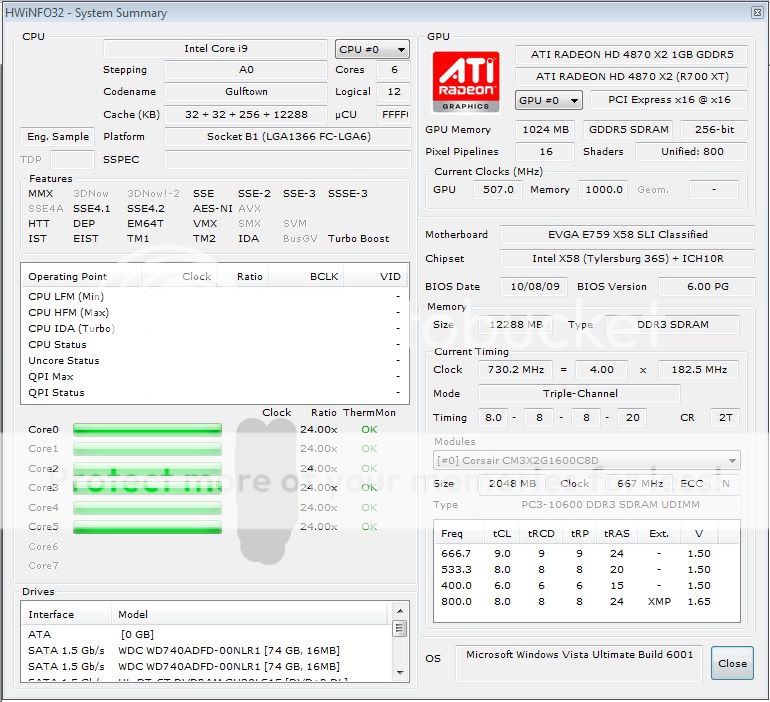What you say is true, of course, but I was looking at it from a glass is half-full viewpoint...assuming that at worst the cooling on gulftown is no worse than the cooling on bloomfield but that there were some cores for which the cooling (thermal conductivity of the die and IHS) has been improved upon.
So if bloomfield cores at full-load were say 45C/44C/45C/46C and Gulftown cores at full-load were say 45C/40C/42C/46C/39C/38C then sure the spread in temps has widened but the hottest core is no hotter.
At any rate there is a very simple rule of thumb to use here, if thermal conductivity is not significantly changing then temperature will scale with power-consumption divided by die-area. (temperature is thermal-density dependent)
Meaning a 130W 263mm^2 bloomfield would be expected to run slightly cooler in temps compared to a 130W 220mm^2 gulftown for no other reason than the physics at the heart of canonical ensembles and phonons.
So if bloomfield cores at full-load were say 45C/44C/45C/46C and Gulftown cores at full-load were say 45C/40C/42C/46C/39C/38C then sure the spread in temps has widened but the hottest core is no hotter.
At any rate there is a very simple rule of thumb to use here, if thermal conductivity is not significantly changing then temperature will scale with power-consumption divided by die-area. (temperature is thermal-density dependent)
Meaning a 130W 263mm^2 bloomfield would be expected to run slightly cooler in temps compared to a 130W 220mm^2 gulftown for no other reason than the physics at the heart of canonical ensembles and phonons.





